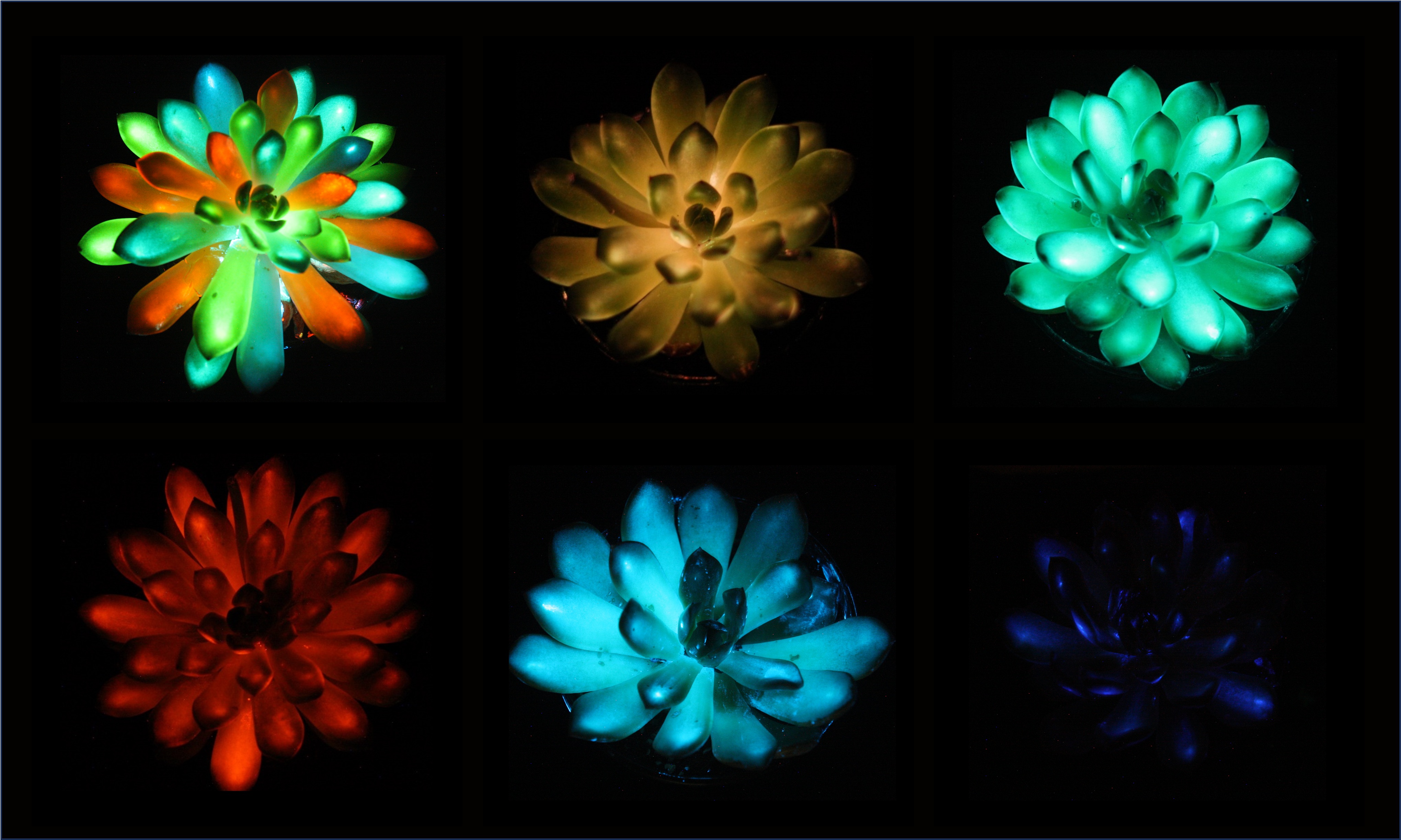Media release
From:
Glow-in-the-dark succulents that recharge with sunlight
From mushrooms that cast a soft green glow to plankton that glimmers sparkling blue, glowing plants are nothing new for nature. Now, scientists are bringing that light to houseplants.
Reporting in the Cell Press journal Matter on August 27, researchers crafted glow-in-the-dark succulents that recharge in sunlight. Injected with light-emitting compounds, the plants can shine in various colors and rival a small night light at their brightest. The simple, low-cost method may help lay the foundation for sustainable, plant-based lighting systems.
“Picture the world of Avatar, where glowing plants light up an entire ecosystem,” says first author Shuting Liu of South China Agricultural University. “We wanted to make that vision possible using materials we already work with in the lab. Imagine glowing trees replacing streetlights.”
Glowing greenery isn’t a new idea. Past studies have designed similar plants using genetic engineering. But the glow is often faint and is typically only available in green. The methods were also complex and costly.
Instead of coaxing cells to glow through genetic modification, the team used afterglow phosphor particles—materials similar to those found in glow-in-the-dark toys. These compounds absorb light and release it slowly over time.
For the particles to travel through leaf tissues, the researchers had to get the size just right: around 7 micrometers, roughly the width of a red blood cell.
“Smaller, nano-sized particles move easily within the plant but are dimmer,” says Liu. “Larger particles glowed brighter but couldn’t travel far inside the plant.”
The team then injected the particles into several plant species, including succulents and non-succulents like golden pothos and bok choy. But only the succulents produced a strong glow, thanks to the narrow, uniform, and evenly distributed channels within the leaf that helped to disperse the particles more effectively. After a couple of minutes of exposure to sunlight or indoor LED light, the modified plants glowed for up to two hours.
“It was really unexpected,” says Liu, noting that she initially thought plants with airy tissue structures would perform better. “The particles diffused in just seconds, and the entire succulent leaf glowed.”
By using different types of phosphors, the researchers created plants that shine in various colors, including green, red, and blue. They even built a glowing plant wall with 56 succulents, bright enough to illuminate nearby objects and read texts.
“Each plant takes about 10 minutes to prepare and costs a little over 10 yuan (about $1.4), not including labor,” says Liu.
The glowing succulents’ light fades over time, and the team are still studying the long-term safety of the materials for the plants. Still, the concept could offer a sustainable alternative for low-intensity lighting in pathways, gardens, or indoor decor. The team is also exploring how the method can light up plants beyond succulents.
“I just find it incredible that an entirely human-made, micro-scale material can come together so seamlessly with the natural structure of a plant,” says Liu. “The way they integrate is almost magical. It creates a special kind of functionality.”
Multimedia




 International
International



